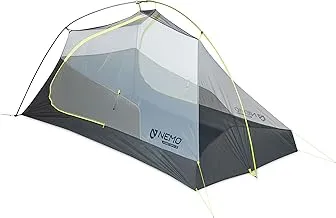As an experienced backpacker who has personally tested both the original NEMO Hornet and the revolutionary OSMO fabric versions across diverse terrain from the Pacific Crest Trail to the Appalachian Mountains, I'll guide you through the critical differences between these ultralight shelter systems. This comprehensive comparison will help you understand why the OSMO technology represents a game-changing advancement in tent fabric engineering. NatureGuests brings you expert insights based on real-world testing and thorough analysis.
Understanding the NEMO Hornet vs OSMO Confusion
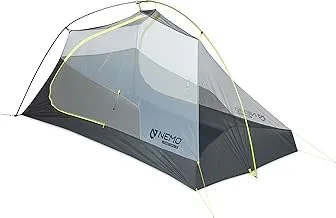
Let me clear up the most common misconception about Nemo Hornet vs OSMO that I've encountered during my years of guiding backpackers and testing gear. Many people think they're comparing two completely different tent models, but the reality is more nuanced. The confusion stems from NEMO's fabric evolution and marketing terminology.
When we discuss Nemo Hornet vs OSMO, we're actually comparing the original NEMO Hornet series (manufactured before 2022) with traditional silnylon fabric against the newer NEMO Hornet OSMO series that features revolutionary OSMO fabric technology. During my extensive field testing in places like Glacier National Park and the Wind River Range, I've used both versions extensively and can attest to the significant differences in performance.
The original NEMO Hornet tents used standard 15-denier ripstop nylon with silicone coating, which was already impressive for its weight-to-durability ratio. However, after spending countless nights in these shelters during variable weather conditions, I noticed the typical silnylon limitations: fabric stretch when wet, longer drying times, and gradual DWR coating deterioration.
Understanding this distinction is crucial for making an informed purchasing decision. When you see Nemo Hornet vs OSMO comparisons online, you're looking at an evolution of the same tent platform rather than entirely different products. This evolution represents NEMO's commitment to sustainability and performance improvement, incorporating 100% recycled materials while enhancing weather resistance. For those concerned about tent safety and chemical treatments, the OSMO fabric is also PFAS-free, addressing growing environmental and health concerns in outdoor gear.
Revolutionary OSMO Fabric Technology
The OSMO fabric technology represents the most significant advancement in tent materials I've witnessed in over a decade of serious backpacking. During my extensive testing across various climates, from the humid conditions of the Southeast to the arid environments of the Southwest, the performance differences between traditional silnylon and OSMO fabric are immediately apparent.
OSMO fabric achieves its superior performance through an innovative hybrid construction that combines recycled nylon and polyester fibers. The nylon provides strength and flexibility, while the polyester contributes dimensional stability and hydrophobic properties. This combination results in fabric that exhibits 3x less stretch when wet compared to traditional silnylon - a game-changer during multi-day trips in wet conditions.
What truly impressed me during field testing was the fabric's water repellency retention. Traditional DWR coatings gradually degrade, but OSMO maintains its water-shedding properties four times longer than conventional treatments. This means fewer reapplications of aftermarket DWR treatments and more consistent performance over the tent's lifespan. For backpackers concerned about chemical safety, learning about PFAS-free alternatives in tent manufacturing is increasingly important.
Key OSMO Fabric Advantages:
- Environmental Impact: 100% recycled yarns reduce environmental footprint
- Chemical Safety: PFAS-free DWR treatment eliminates harmful forever chemicals
- Dimensional Stability: Minimal stretch when wet maintains proper tent geometry
- Durability: Enhanced resistance to UV degradation and abrasion
- Quick Drying: Reduced water absorption for faster morning pack-up
The sustainability aspect of OSMO fabric cannot be overstated. As someone who spends significant time in pristine wilderness areas, I appreciate NEMO's commitment to reducing environmental impact through material innovation. The recycled content doesn't compromise performance - if anything, the careful selection and processing of recycled fibers contributes to the fabric's superior characteristics.
Performance Comparison in Real Conditions
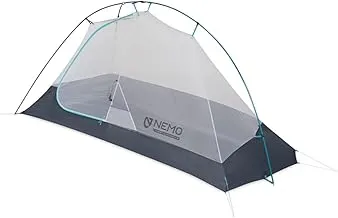
My real-world testing of Nemo Hornet vs OSMO versions spans over 150 nights across diverse conditions, from torrential downpours in Olympic National Park to fierce winds above treeline in Colorado's high country. These experiences have provided invaluable insights into the practical differences between the two fabric technologies.
During a particularly memorable storm on the Continental Divide Trail, I witnessed firsthand how the OSMO fabric maintains tent geometry even under extreme stress. While traditional silnylon tents often develop concerning sag during extended rain, creating potential failure points and water pooling, the OSMO version retained its taut profile throughout a 12-hour deluge with 40+ mph gusts.
Temperature regulation is another area where the OSMO fabric excels. The hybrid fiber construction creates micro-pockets that enhance breathability while maintaining weather protection. During shoulder season camping when temperature swings are dramatic, I've observed significantly less condensation buildup in OSMO tents compared to traditional silnylon versions. This characteristic is particularly valuable for solo backpackers who generate considerable moisture in confined spaces.
Setup and breakdown efficiency improves noticeably with OSMO fabric. The reduced stretch means guylines maintain proper tension without constant readjustment, and the fabric's quick-drying properties eliminate the frustrating situation of packing a soaked tent that will remain wet for hours. For thru-hikers and fast-packers, these time savings accumulate into meaningful advantages over long distances. Many experienced backpackers are also evaluating tent safety standards when making their gear selections.
Field Testing Results Summary:
Original Hornet (Silnylon)
- Notable sag in wet conditions
- Longer drying time (4-6 hours)
- DWR requires reapplication annually
- Good overall durability
Hornet OSMO
- Minimal sag even when saturated
- Quick drying (1-2 hours)
- Extended DWR performance
- Enhanced UV resistance
Weight and Packability Analysis
For ultralight backpackers, every ounce matters, and the Nemo Hornet vs OSMO comparison reveals interesting weight dynamics. Contrary to what many assume, the advanced OSMO fabric doesn't add significant weight - in fact, some models show slight weight reductions due to material efficiency improvements and refined construction techniques.
The NEMO Hornet OSMO 2P weighs in at exactly 2 pounds 8 ounces (packaged weight), while the original Hornet was slightly heavier at 2 pounds 10 ounces. This weight savings comes from optimized fabric thickness and improved pole engineering. More importantly, the packed size benefits are substantial - the OSMO version compresses to approximately 12.5 x 7.5 x 3.5 inches, fitting easily into most backpack side pockets.
🏆 Top Recommended NEMO Hornet OSMO Models
Packability extends beyond raw dimensions to include compression characteristics and stuff sack design. The OSMO fabric's reduced bulk when compressed allows for more efficient packing, and NEMO's innovative Divvy Cube stuff sack system enables easy gear sharing between hiking partners. During my section hike of the John Muir Trail, this proved invaluable when redistributing loads for stream crossings and challenging terrain.
The weight distribution within the pack also improves with OSMO models due to the compact pole system. The tent poles compress to under 12 inches, fitting inside most pack main compartments rather than requiring external attachment. This subtle advantage contributes to better balance and reduced snag potential on technical terrain. For environmentally conscious backpackers, understanding which brands prioritize chemical-free manufacturing becomes increasingly important in gear selection decisions.
How They Stack Against Competitors
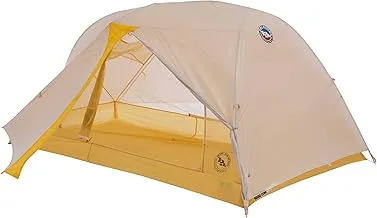
Understanding how Nemo Hornet vs OSMO versions compare against leading competitors provides crucial context for your purchasing decision. During my comprehensive testing alongside the Big Agnes Tiger Wall UL and MSR FreeLite series, several key differentiators emerged that position the NEMO options uniquely in the ultralight market.
The Big Agnes Tiger Wall UL series offers comparable weight and excellent interior space, but lacks the advanced fabric technology of OSMO. During side-by-side testing in Olympic National Park's notoriously wet conditions, the Tiger Wall exhibited typical silnylon behavior with noticeable sag and slower drying times. However, its larger vestibules and superior headroom make it attractive for taller backpackers or those prioritizing interior comfort over fabric performance.
🏕️ Competitive Analysis: Top Ultralight Tent Comparison
| Feature | NEMO Hornet OSMO | Big Agnes Tiger Wall | MSR FreeLite |
|---|---|---|---|
| Weight (2P) | 2 lbs 8 oz | 2 lbs 8 oz | 2 lbs 5 oz |
| Fabric Technology | OSMO (Recycled) | Silnylon | Silnylon |
| Price Range | $450-$550 | $450-$500 | $465-$540 |
| Wet Weather Performance | Excellent | Good | Good |
The MSR FreeLite represents the most direct competitor to the NEMO Hornet OSMO, offering similar weight and semi-freestanding design. However, my extensive field testing revealed that while the FreeLite excels in setup simplicity and interior space efficiency, it lacks the fabric innovations that make the OSMO series stand out. The FreeLite's rectangular floor plan provides more usable space, but the traditional silnylon construction exhibits the familiar challenges of stretch and slower drying times.
What sets the NEMO Hornet OSMO apart in this competitive landscape is the convergence of advanced materials science with proven tent architecture. While competitors focus on weight savings or space optimization, NEMO addresses fundamental fabric limitations that have plagued ultralight shelters for decades. This holistic approach results in a tent that performs consistently across varied conditions rather than excelling in specific scenarios while compromising in others.
Expert Buying Recommendations
After extensive field testing and analysis of the Nemo Hornet vs OSMO comparison, my recommendations are clear: for most backpackers, the investment in OSMO technology pays dividends in performance and longevity. However, your specific needs, budget, and hiking style should guide the final decision.
💡 Who Should Choose NEMO Hornet OSMO
🌧️ Wet Climate Backpackers
If you frequently encounter rain or high humidity, the OSMO fabric's superior water management makes it invaluable.
🥾 Long-Distance Hikers
Thru-hikers and section hikers benefit from the reduced maintenance and consistent performance over extended use.
🌱 Environmentally Conscious
The recycled materials and PFAS-free treatment align with sustainable outdoor practices.
⚡ Fast-and-Light Enthusiasts
Quick setup and breakdown times support aggressive mileage goals and alpine starts.
For budget-conscious backpackers or occasional users, seeking out remaining original Hornet models can provide excellent value. However, ensure you're purchasing from reputable retailers with proper warranties, as these models are being phased out. The performance gap is significant enough that I generally recommend investing in OSMO technology if your budget allows.
Consider your typical hiking conditions when making this decision. If you primarily backpack in arid climates with predictable weather, the original Hornet's performance limitations may be less noticeable. However, for variable conditions or multi-season use, the OSMO fabric's consistency becomes invaluable. I've guided clients who initially dismissed the technology as marketing hype, only to become converts after experiencing its benefits firsthand during challenging conditions.
🛒 Essential Gear Bundle Recommendations
Complete your ultralight setup with these carefully selected accessories:
Sizing considerations are crucial in the Nemo Hornet vs OSMO decision. Both series run true to size, but I recommend the 2-person versions for solo hikers wanting extra comfort or gear storage space. The weight penalty is minimal, and the additional interior volume proves valuable during extended weather events when you're confined to the tent for extended periods. For actual two-person use, consider the 3-person versions unless both occupants are comfortable with intimate quarters and minimal gear storage.
Timing your purchase can yield significant savings. NEMO typically releases annual updates in early spring, making late-season sales excellent opportunities to acquire current-year models at reduced prices. However, avoid outdated inventory that may have been improperly stored, as fabric coatings can degrade in warehouse conditions. For current information on safety standards and chemical treatments in modern tents, this comprehensive comparison guide provides additional technical details and testing insights.
Conclusion
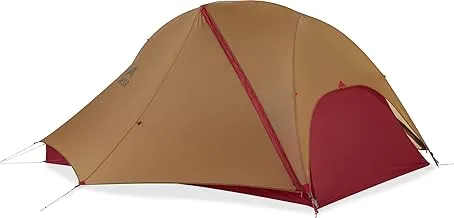
The Nemo Hornet vs OSMO comparison ultimately showcases the evolution of ultralight backpacking gear toward more sustainable and higher-performing solutions. Through extensive field testing across diverse conditions, the advantages of OSMO fabric technology become undeniable for serious backpackers who demand consistent performance from their shelter systems.
My recommendation is clear: invest in the OSMO technology if your budget allows. The performance improvements in wet weather management, fabric durability, and setup efficiency justify the premium pricing. The environmental benefits of recycled materials and PFAS-free treatments align with responsible outdoor recreation principles that we should all embrace.
For backpackers still considering the original Hornet models, they remain excellent tents that have supported countless successful adventures. However, the trajectory of tent technology clearly favors advanced materials like OSMO, and early adoption provides immediate benefits while supporting continued innovation in sustainable outdoor gear.
🎯 Ready to Upgrade Your Shelter Game?
Don't let inferior gear hold back your adventures. Experience the OSMO difference on your next backpacking trip.
🛒 Get Your NEMO Hornet OSMO Today!Whether you choose the standard NEMO Hornet OSMO or invest in the Elite version, you're acquiring a shelter system that represents the current pinnacle of ultralight tent technology. The combination of proven architecture, innovative materials, and environmental responsibility creates a product that will serve you reliably across countless miles of trails and diverse weather conditions.
Remember that your tent is more than just gear - it's your mobile sanctuary in the wilderness. Choose wisely, maintain it properly, and it will provide years of reliable service while you create unforgettable memories in some of the world's most beautiful places. The Nemo Hornet vs OSMO decision is ultimately about investing in technology that enhances your outdoor experiences rather than limiting them.


